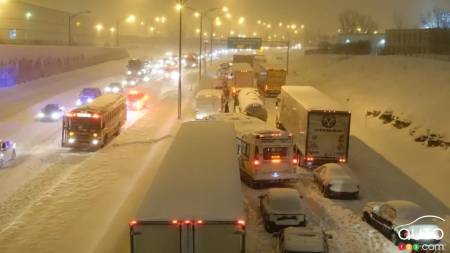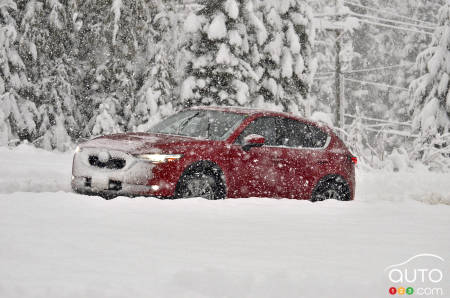Every winter in Canada, we get hit by a few monster storms and, unfortunately, the occasional monster highway pile-up. Road conditions certainly contribute to the latter, but it’s clear that the recklessness and inexperience of some motorists also play a big role.
And here’s the thing about the way too many of us drive. According to what people write on social networks, no one knows how to drive except... themselves. In other words, we're all experts... in our own minds.
Far be it for us to give you lessons on how to conduct yourselves in winter (although a short course in advanced winter driving wouldn't hurt anyone!).
Rather, some well-publicized highway pileups in recent winters have led us to think of all those who have been forced to remain trapped for hours inside their vehicle while a fierce storm raged outside.
Auto123 launches Shopicar! All new makes and models and all current promotions.
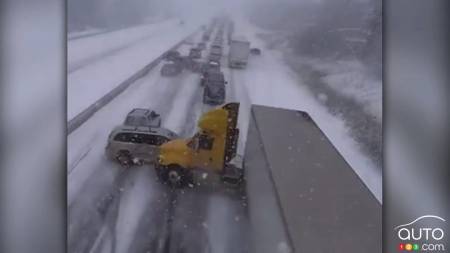
How many of them were "well equipped" for the occasion?
Very few, unfortunately.
Now, in the case of a pile-up, there are other people around who can come to our assistance. However, what happens if you find yourself in a field in the middle of the night and no one will see you before daybreak? Do you have what it takes to survive comfortably in this situation?
Here are a few tips that may help you.
1 - Gasoline
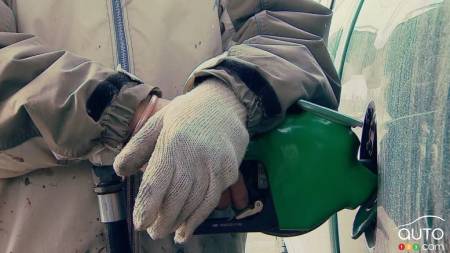
Are you in the habit of driving on your car's fuel reserve and waiting until the last minute before filling up? If so, perhaps you might reconsider; think of the instances when people have had to spend hours inside their vehicles waiting for reinforcements.
It’s estimated that, when immobile, a vehicle consumes 0.6 litres per hour, per litre of capacity of the engine. A 3.5 litre engine thus burns 2 litres per hour when idling. So you would need 8 litres to last four hours in a traffic jam. Often the low-fuel warning light only comes on when there are only 5 litres left.
2 - The emergency kit
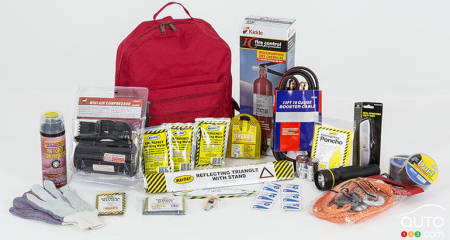
Few people have an emergency kit inside their vehicle. Any yet, it could prove to be a lifesaver when bad luck strikes. Basically, the kit should contain non-perishable food (energy bars), water (it will freeze, so make sure the plastic bottle it comes in is of the kind that won’t break), a change of clothes, blankets, and a first-aid kit. A flashlight, a whistle to attract attention and a shovel should also be considered.
And to stay warm, here's a simple trick: a candle that you light inside an empty metal container (one litre of paint). The combination of the two will act like a small fireplace and will allow you to save on fuel.
3 - In the trunk
.jpg?scaledown=450)
In winter, the trunk of your vehicle should contain the following items; salt, sand, antifreeze and windshield washer fluid, tow cables, jumper cables, a fire extinguisher, a traction mat and flares. How many of you drive around with these items in your vehicle? Think about it, because the day you need it, you'll be glad you thought of it.
4 - Stay calm and...
Finally, the important thing in such a situation, especially if you find yourself alone, is to remain calm. Avoid working too hard to try to get unstuck if you've hit the ditch; you could burn yourself out unnecessarily. If your engine is running, don't forget to open the windows a little to let in some fresh air. Above all, make sure the exhaust pipe is not blocked, to avoid the risk of carbon monoxide poisoning.

5 – More tips
Here are some other little tips that may be helpful if you ever find yourself in an unfortunate situation.
- Do you have a cord for charging your smartphone?
- Have a pencil and paper handy. Often, when we contact emergency services, we’re given information or phone numbers to write down.
- A portable compressor may be enough to re-inflate the tire that’s immobilized you, so that you can get yourself back on the road to the nearest garage.
- Do you have the necessary tools on board for a tire change. etc.?
- Make sure you have good boots, gloves and spare socks on board.
Conclusion
Of course, we hope that you’ll never find yourself in an unfortunate situation that requires you to have the above-mentioned items on hand.
Three winters ago, the infamous Highway 13 incident in Montreal saw motorists remain stuck in their vehicles for a dozen hours overnight – smack in the middle of the city. It is still fresh in the memory of many.
And keep in mind that, yes, this kind of thing only happens to other people, until the day...
